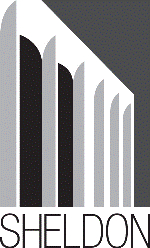Fine and Performing Arts, Hixson-Lied College of

Sheldon Museum of Art: Catalogs and Publications
Date of this Version
1970
Citation
The Sheldon Sculpture Garden at The University of Nebraska, Lincoln, November 15, 1970
Abstract
The occasion for the present exhibition, the dedication of the Sheldon Sculpture Garden, marks the completion of one of the most important gifts ever made to the University of Nebraska and to the people of the state. The importance of the gift lies not only in the fact of the distinguished building and the art objects which it houses, but also in the fact of their presence as a potential, a place and a situation where the creative spirit, traditional and activist, may find a laboratory, a workshop and an audience.
The garden is first of all a physical enlargement of the gallery facility, but it is as well an expansion of the interpretive function of the institution as a whole. It is, in fact, the first completed unit in an overall plan for the redesign of the University campus, a plan which will undertake to balance the practical needs of the urban institution with the amenities of the spirit which it represents. In the present instance, the inaugural exhibition undertakes to demonstrate the purpose and value of that plan, not only within the University itself, but as regards the relationship of the institution to the immediate community. It offers an unprecedented opportunity to extend the impact of works of contemporary art beyond the traditional limits of the art gallery and the garden into the context of downtown Lincoln. The random confrontations of daily business will provide a test of some of the ideas current in present day art. These ideas are hardly new, but they nevertheless have taken a form which is peculiarly characteristic of our times.
In a more traditional sense, this will constitute one of the rare occasions on which the history of sculpture in the United States has been taken as a whole as the subject for such an exhibition. Ideally such a conception would be difficult, it not impossible, to realize. The very nature of the material involved is against it. To undertake the project even so, necessitates immediate and continuous compromise and the organizers can only hope to keep within sight of the ideal, representing much by the token presence of important material, suggesting much by implication and taking variable samples of different depth and quantity. If some major achievements are missing, some important figures omitted altogether, we can at the same time call attention to some unknown, forgotten or neglected achievements. Our hope would be, that however much we fail in an encyclopedic sense, we gain, at the same time, a fresh view of the art of sculpture as a gauge of American experience.

